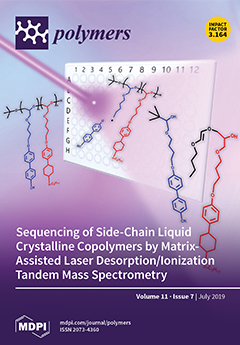In this study, magnetic fluorescence molecularly imprinted polymers were fabricated and used for the selective separation and fluorescence sensing of trace bisphenol A (BPA) in environmental water samples. The carboxyl-functionalized FeO
x magnetic nanoparticles were conjugated with mercaptoethylamine-capped Mn
2+ doped ZnS quantum
[...] Read more.
In this study, magnetic fluorescence molecularly imprinted polymers were fabricated and used for the selective separation and fluorescence sensing of trace bisphenol A (BPA) in environmental water samples. The carboxyl-functionalized FeO
x magnetic nanoparticles were conjugated with mercaptoethylamine-capped Mn
2+ doped ZnS quantum dots to prepare magnetic FeO
x and ZnS quantum dot nanoparticles (FeO
x/ZnS NPs). Additionally, molecular imprinting on the FeO
x/ZnS NPs was employed to synthesize core-shell molecularly imprinted polymers. The resulting nanoparticles were well characterized using transmission electron microscopy, Fourier transform infrared spectra, vibrating sample magnetometer and fluorescence spectra, and the adsorption behavior was investigated. Binding experiments showed that the molecularly imprinted FeO
X/ZnS NPs (FeO
x/ZnS@MIPs) exhibited rapid fluorescent and magnetic responses, and high selectivity and sensitivity for the detection of bisphenol A (BPA). The maximum adsorption capacity of FeO
x/ZnS@MIPs was 50.92 mg·g
−1 with an imprinting factor of 11.19. Under optimal conditions, the constructed fluorescence magnetic molecularly imprinted polymers presented good linearity from 0 to 80 ng mL
−1 with a detection limit of 0.3626 ng mL
−1 for BPA. Moreover, the proposed fluorescence magnetic polymers were successfully applied to on-site magnetic separation and real-time fluorescence analysis of target molecule in real samples.
Full article






